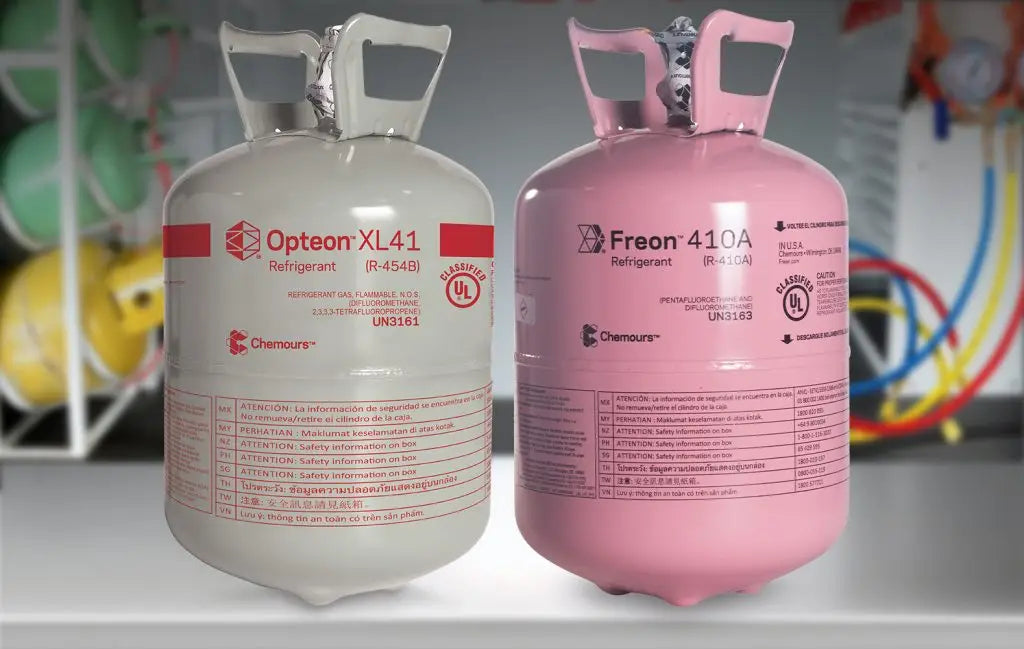HVAC Tips
R-32: The Next-Gen Refrigerant Explained
Confused by all the talk about refrigerants? HVAC expert Mark Callahan breaks down why R-32 is replacing R-410A and what it means for your comfort, your wallet, and the environment.
Top Signs It’s Time to Replace Your AC and Air Handler Together
Replacing your AC and air handler at the same time can save money, improve efficiency, and extend system life. Learn the key signs that it’s time for a combined replacement and how to make the best choice for your home.
Where Should You Install Your Air Handler? Pros and Cons of Attics, Closets & More
Location matters more than you think. From attics to utility closets, find out where your air handler should live—and why it impacts performance and energy bills.

Why R-32 Is the Smarter Refrigerant Choice for Your Next AC
Do You Need a Multi-Position Air Handler? Pros, Cons, and When It Makes Sense
Not all air handlers are created equal. Learn what a multi-position air handler is, how it works, and whether it's the right fit for your home HVAC setup.
What Is an Air Handler? Everything You Need to Know
Confused about what an air handler does? Get a complete breakdown of how it works, why it matters, and how to choose the right one for your home comfort system.
How to Choose the Right Size Air Conditioner for Your Home
Struggling to find the perfect AC size for your space? Learn how BTUs, square footage, and Manual J calculations can save you money and boost comfort.
A2L vs. HFCs: Is Your HVAC System Fueling the Future—or Holding It Back?
As HVAC shifts toward greener technology, the refrigerant you choose matters more than ever. This deep dive compares A2L refrigerants—like R-32—with legacy HFCs across energy efficiency, environmental impact, flammability, cost, and global regulations. Discover how A2Ls offer a powerful blend of performance and sustainability, and why the future of cooling depends on smart, informed choices. Ideal for HVAC pros, system designers, and forward-thinking property owners.
Are You Recovering A2L Refrigerants Safely—Or Just Legally?
With A2L refrigerants like R-32 becoming the HVAC standard, recovery is no longer just about legality—it’s about safety, skill, and sustainability. This guide dives into the best practices, tools, and training needed to recover A2Ls the right way. Learn how to avoid flammability risks, maintain compliance, and protect both the environment and your crew with expert-backed insights for technicians and HVAC pros.
What Makes A2L Refrigerants So Safe—Until They’re Not?
A2L refrigerants like R-32 promise sustainability and performance—but only if stored safely. This guide explains the real-world risks behind their "mild flammability" label and the strategies needed to prevent leaks, fires, or compliance failures. From ventilation and temperature control to training and emergency response, you’ll learn how to build a safe, regulation-ready storage system that protects people, property, and the planet. Perfect for facility managers, safety officers, and HVAC professionals.
What’s in the Box? The Hidden Rules of Shipping A2L Refrigerants Safely Across Borders
A2L refrigerants are the future of low-impact cooling—but shipping them across borders comes with strict rules. This guide breaks down everything you need to know to move refrigerants like R-32 safely and legally, from IMDG and IATA regulations to packaging, labeling, and SDS requirements.
Why R-32 Is the Future of Home Cooling (And What It Means for You)
R-32 refrigerant is quickly becoming the standard for energy-efficient, eco-conscious home cooling. Learn what sets it apart from R-410A, why major HVAC brands are adopting it, and how it benefits your home and wallet.
